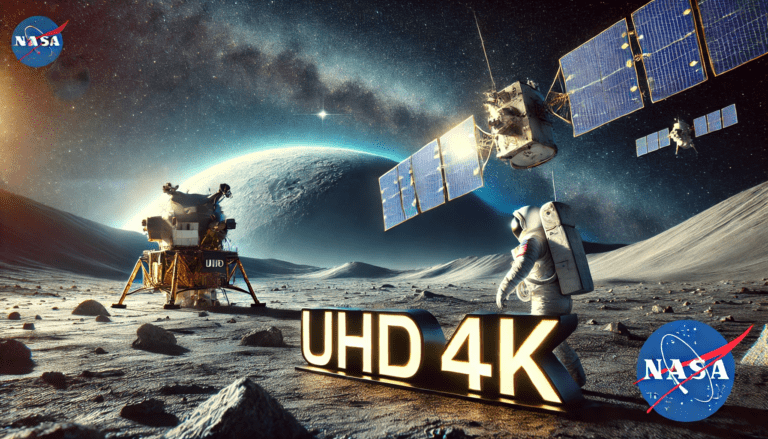- Broadcasting live in Ultra High Definition (UHD) from the International Space Station could become a reality by 2025
- 8K, a format in which China already has a channel on the air, is considered one of the major technology trends of 2024
- As in 4K, in 8K also “content is king”, so global associations put their focus on driving the creation of content
Broadcast live in Ultra High Definition (UHD) from the International Space Station or take images from the Moon in 8K are some of the challenges in which NASA is immersed, which has put the finishing touch to the tenth edition of the 4K HDR Summit, “Where technology and content have time to talk”, which has again reaped a resounding success both in its two days in person, with 400 attendees at the Cartuja Auditorium in Seville, as in its two virtual, making Seville and Andalusia in the epicenter of the audiovisual industry worldwide.
“Spain, and mainly Andalusia, has become the main laboratory of Ultra High Definition in Europe and we are also the meeting point for new technologies and content production in 4K worldwide,” said Rafael Porras, president of the Board of Directors of Canal Sur Radio and Television, responsible for kicking off the day dubbed ‘Day of Presidents’ and has advanced that “the regional television stations grouped in FORTA, and therefore also Canal Sur, have told the Ministry for Digital Transformation its intention to join this train of Ultra High Definition in which RTVE is already and that in 2025 will join some private broadcasters”.
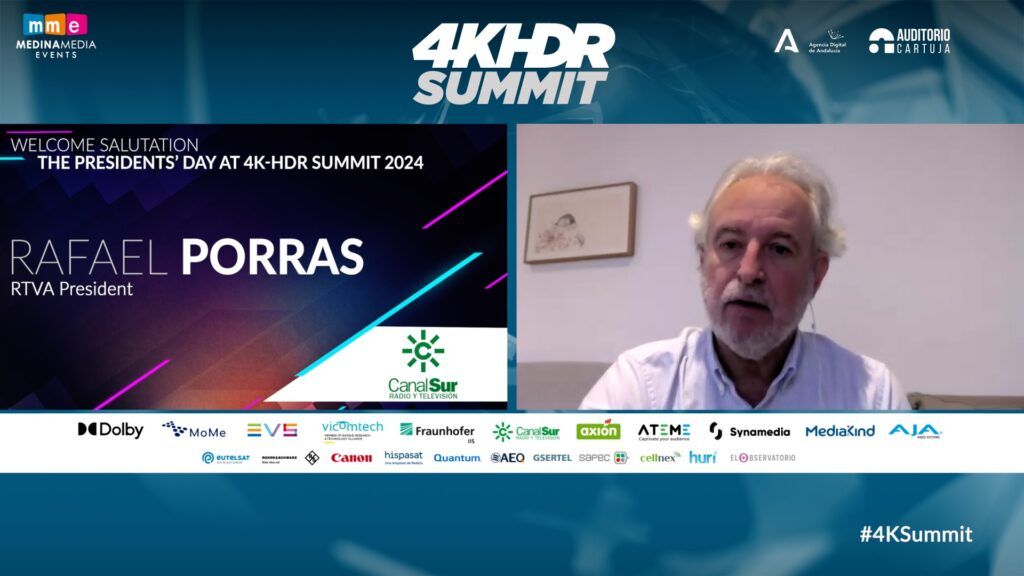
4K broadcasting from the ISS
NASA was represented by Dylan Mathis, Communications Manager of the Office of External Relations, who spoke about the work being done to capture Ultra High Definition (UHD) video not only on the International Space Station, but also in NASA’s future projects, including the return to the Moon in the coming years, or one of its biggest challenges: “broadcasting live in Ultra High Definition (UHD) from the International Space Station”, which “could become a reality in 2025”.
Among its ambitious projects, setting foot on the Moon again is a task that NASA is working hard on, as it intends to offer the world the best possible images thanks to its Artemis program. “The Artemis Nikon Z9 camera will be the camera of choice for lunar missions and will be used not only for photography, but also for 4K and 8K video,” said Dylan Mathis, who highlights the informative component or recordings for film and documentary productions as factors to continue with its “commitment to promote Ultra High Definition”.
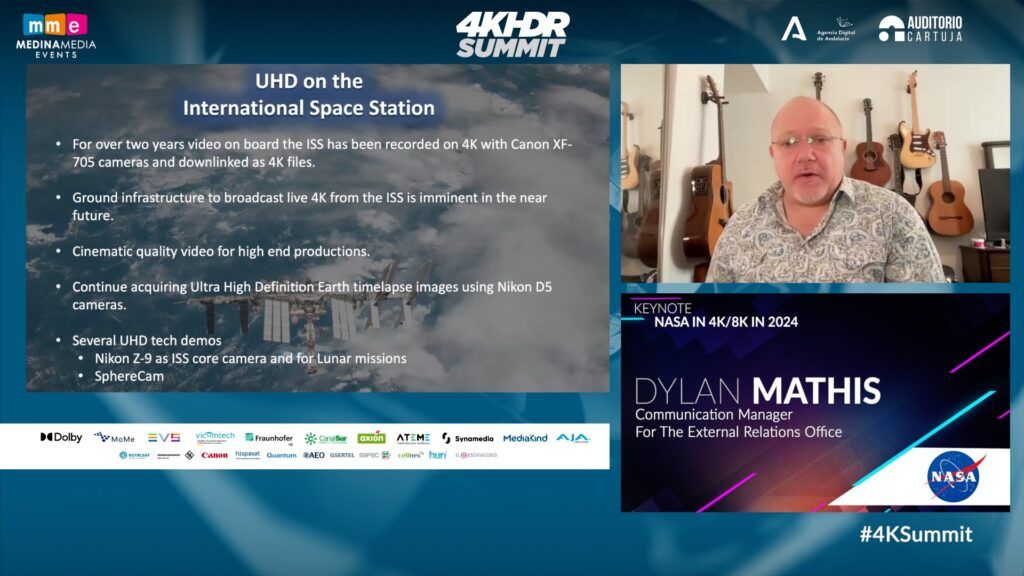
NASA is working on several projects beyond the images usually recorded on the International Space Station, recording in 4K format all launches and landings at the Kennedy Space Center or on the Axiom-3 and Axiom-4 missions, and capturing high-definition images through the James Webb telescope. Not only that, but NASA is also one of those responsible for the birth of ‘The Sphere’, the spectacular music and entertainment pavilion in Paradise, east of Las Vegas, where “cameras are being tested that will use well beyond 8K”.
8K, one of the major technology trends of 2024
The 4K HDR Summit has counted for the first time with the participation of China, which was in person at the Cartuja Auditorium with the UHD World Association (UWA), one of the four global associations of Ultra High Definition (UHD). It has been joined virtually by other major corporations that bring together more than 430 companies around the world linked to the entire audiovisual ecosystem such as the UHD Alliance, the UltraHD Forum and the 8K Association.
Bill Baggelaar, current president of the UHD Alliance has reviewed the decade of progress in which this association has worked tirelessly on one of its greatest challenges: the Filmmaker Mode, with the goal of consumers getting an “authentic and elevated experience with UHD and HDR, as well as being able to see the content as the filmmakers intended it to be seen”. Within the intense work carried out by the UHD Alliance, sustainability and interoperability to achieve a “premium consumer experience” are extremely important aspects, as well as the “viability of OTT for content distribution” or the “great impact that Generative Artificial Intelligence is expected to have on the industry”.
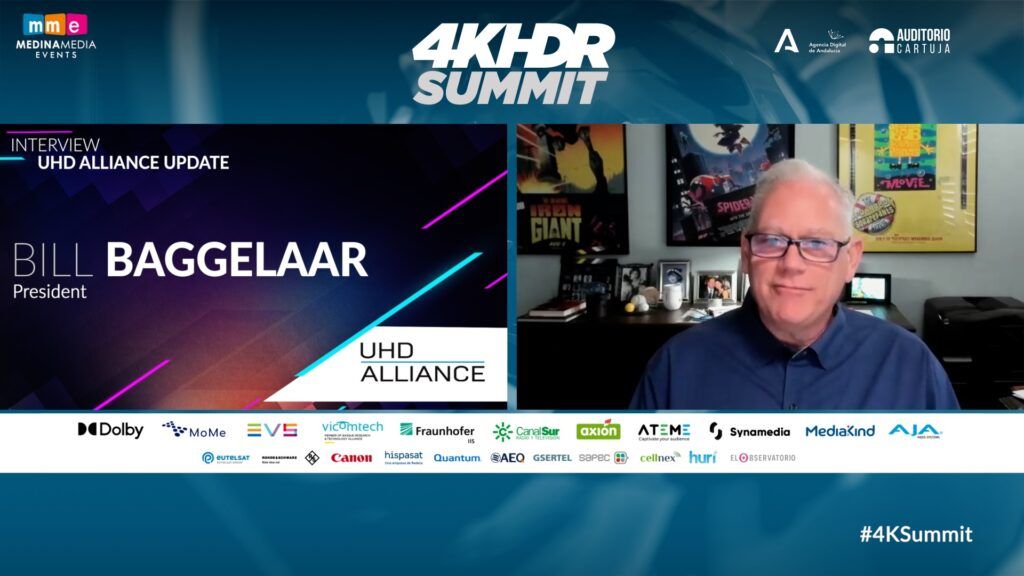
For his part, Juan Reyes, COO of the 8K Association, spoke about the super-realism of 8K and how the technology is redefining the consumer experience. “Currently, the big challenges for 8K are falling selling prices, a slowdown in global sales of 4K and 8K displays, and the lack of native 8K content,” said Juan Reyes, who noted that, in any case, “8K is considered one of the top five technology trends of 2024.” The director of operations of the 8K Association is optimistic in the development of this technology in which there has been “a significant increase in the native capture of content in 8K and an expansion in 8K compatible products”, which, in addition, “is presented as an immersive and realistic experience for consumers”.
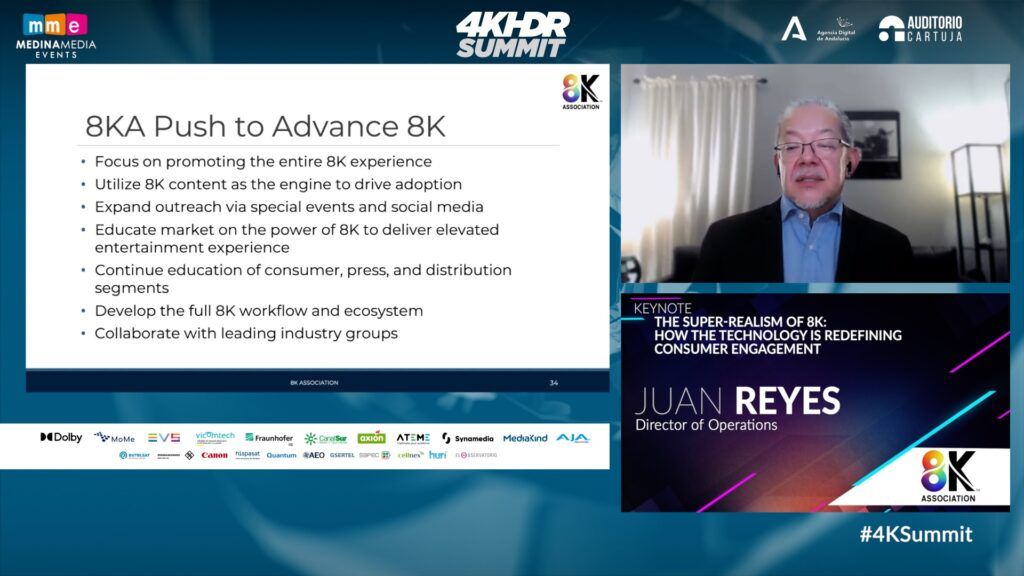
“In 8K, also content is king.”
One of the most knowledgeable people in Ultra High Definition production on the planet is Olivier Chiabodo, CEO of The Explorers, a company that captures the best images in 4K and 8K all over the world, from Asia to Latin America via Europe and Africa. Embarked on a multitude of projects, since 2019 he has been working side by side in China, where there are already “several 4K channels and even a China Media Group 8K channel”, in addition to “a far-reaching promotional program, with a thousand 8K screens in a hundred different cities in China”. “Content is king and the industry needs that content,” proclaimed Olivier Chiabodo, who has contributed to the “development of standards together with UWA such as HDR Vivid, a new standard for video, and Audio Vivid, the equivalent for sound. It’s very important because it allows more people to access advanced technologies without the limitations of licensing“.
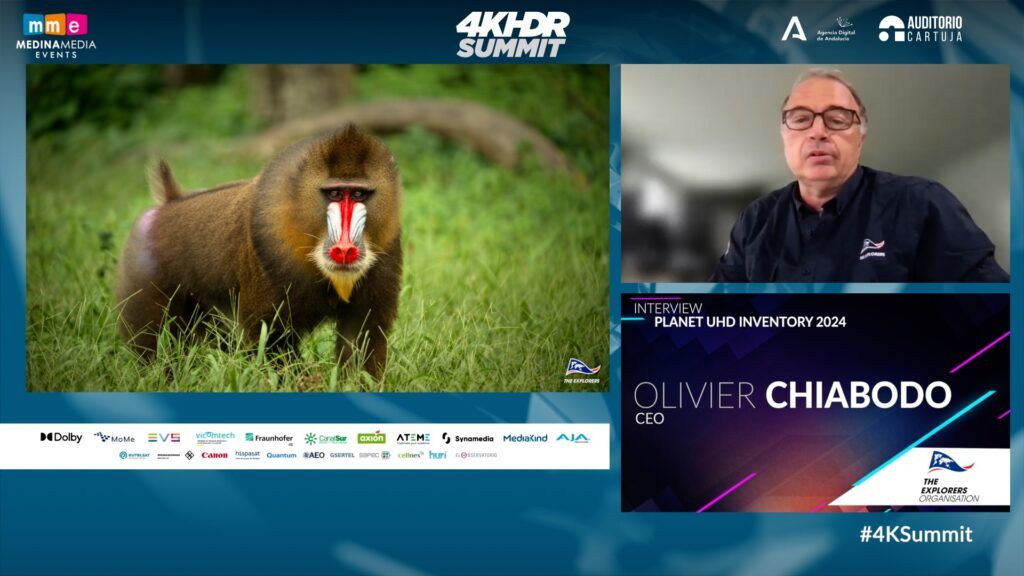
For his part, Sumant Bahl, general manager Europe and Africa at travelxp, has championed the transmission of native 4K, HLG, HDR content. “Originally a lot of broadcasters were just trying to enhance HD to make it look like UHD, but I’m glad the industry has moved on and people realize the value of native versus enhanced,” has maintained Sumant Bahl, whose focus in 2024 will be to “increase distribution and keep getting more content, constantly producing in different countries,” as well as giving visibility to his own SVOD app created during this past year.
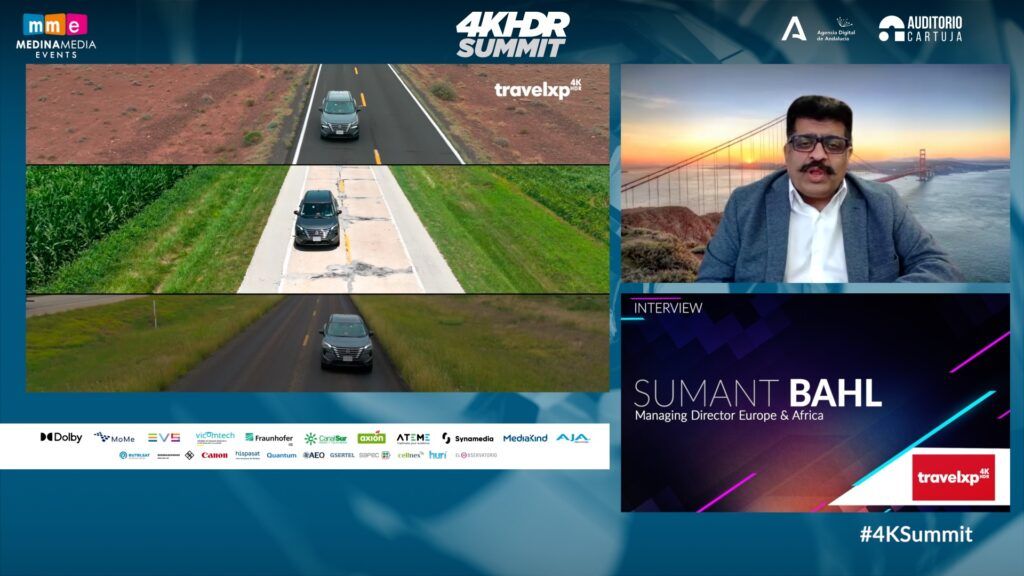
Wally Rodriguez, Vice President of Postproduction and Special Effects (VFX) at Telemundo Center (NBCUniversal), has exposed the great technological change that Telemundo has manifested to turn its work into a more cinematographic product, as well as the implementation of virtual studios, an “extremely important tool” that “allows us to work from anywhere in the world”.
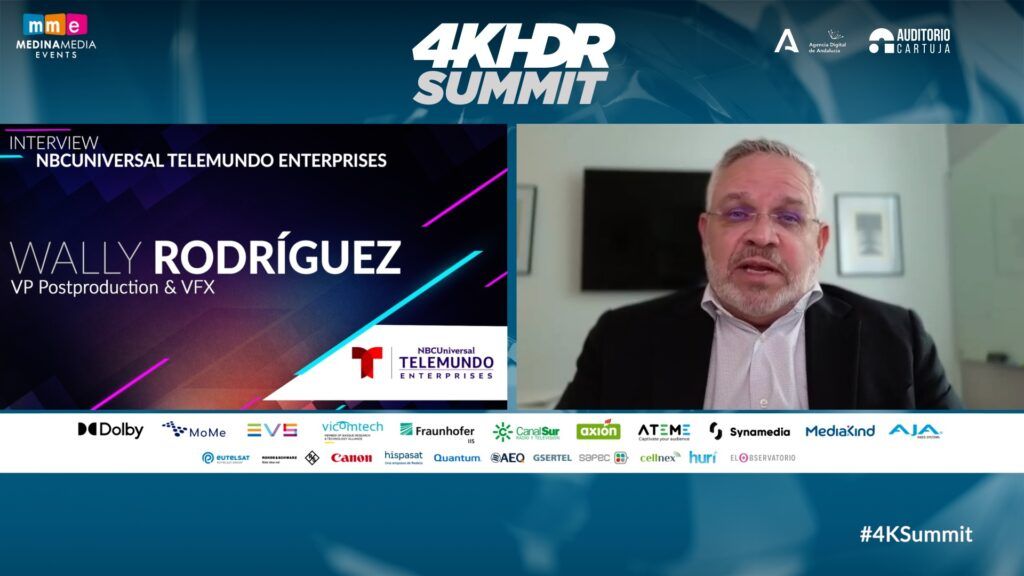
Tonio Di Stefano, president of the UHD Forum in Italy, shared Italy’s somewhat lagging situation compared to other countries such as Spain or France in terms of Ultra High Definition, pointing mainly to a technical factor: “In Italy the problem is linked to the DVB-T2 transition. If that transition were accelerated, the move to UHD could exist, also to implement on terrestrial channels.” However, the arrival of covid slowed everything down, although he acknowledged that, without a doubt, “UHD is today the new normal as a production format, and we have to understand how to distribute UHD content”.
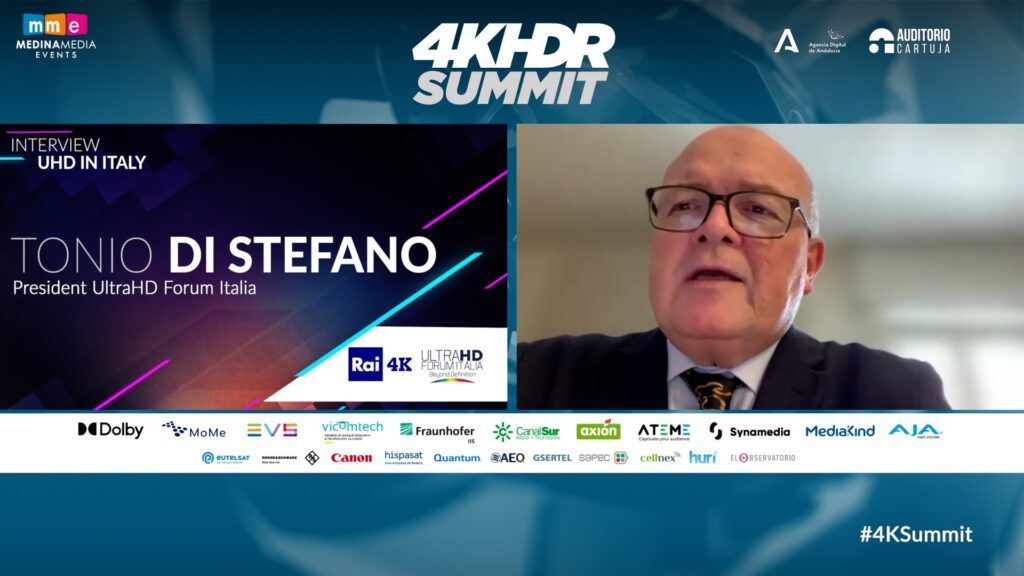
The ‘Day of the Presidents’ has served as the ideal culmination of the tenth edition of the 4K HDR Summit, which is already preparing its eleventh edition to be held from 10 to 13 November 2025 in the Cartuja Auditorium, in the heart of the Cartuja Science and Technology Park in Seville during its first two days in person, which will be joined by two more in virtual format.
The conferences of the 4K HDR Summit 2024 can be followed on Medina Media Events’ ‘The Observatory’ and will be available 24/365. On this platform, attendees can also schedule video meetings with other participants and speakers, in addition to exclusive virtual demonstrations.
The tenth edition of the 4K HDR Summit has been organized by Medina Media Events and has the support of the Digital Agency of Andalusia (ADA), Dolby, MOME, Vicomtech, Canal Sur Radio and Television, EVS, Synamedia, Fraunhofer IIS, Axion, Mediakind, Ateme, AJA, Hispasat, Quantum, Cellnex, Eutelsat, Rohde & Schwarz, Canon, Sapec, AEQ, Gsertel, Hurí and UHD Spain, among others.
